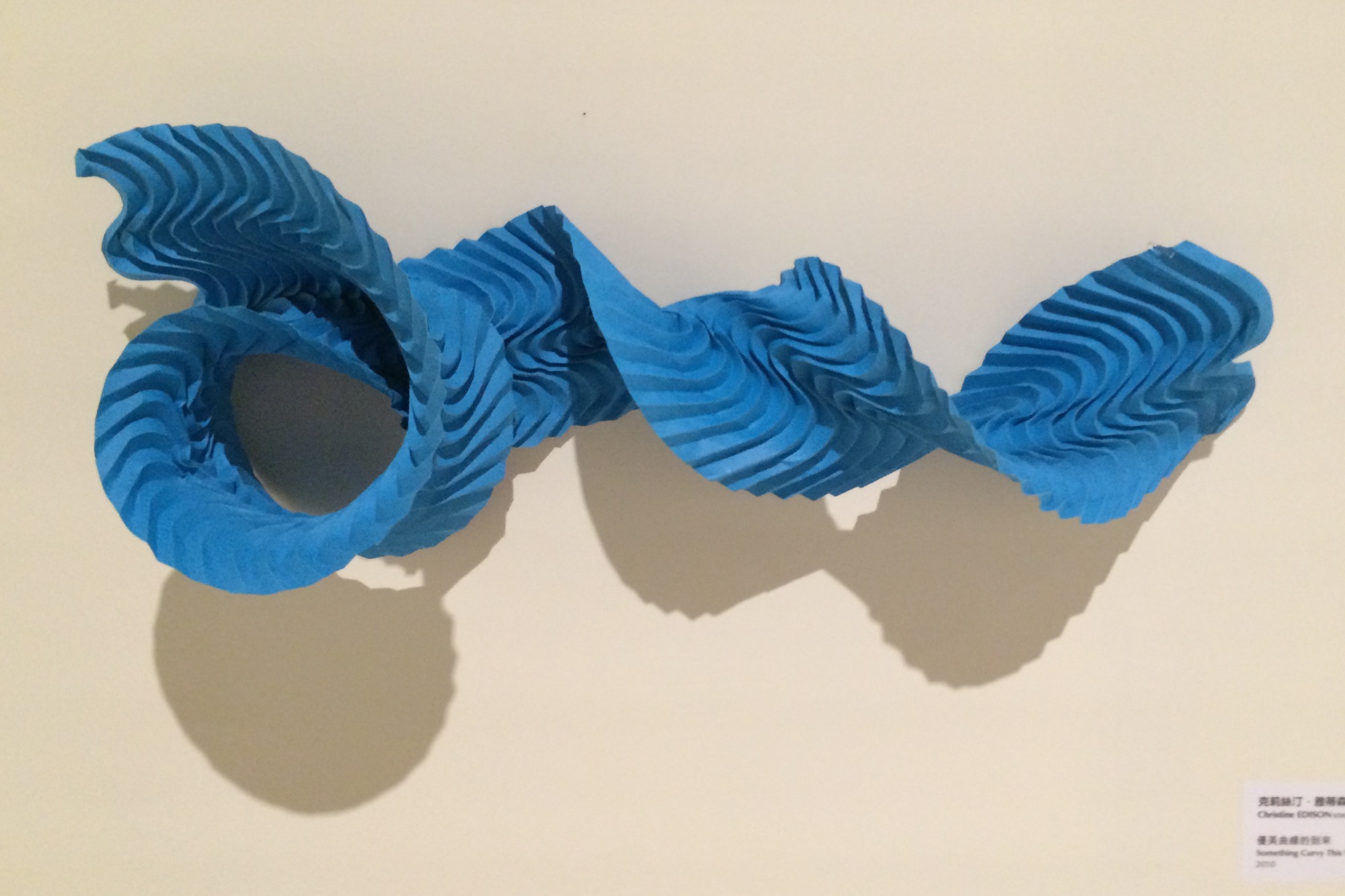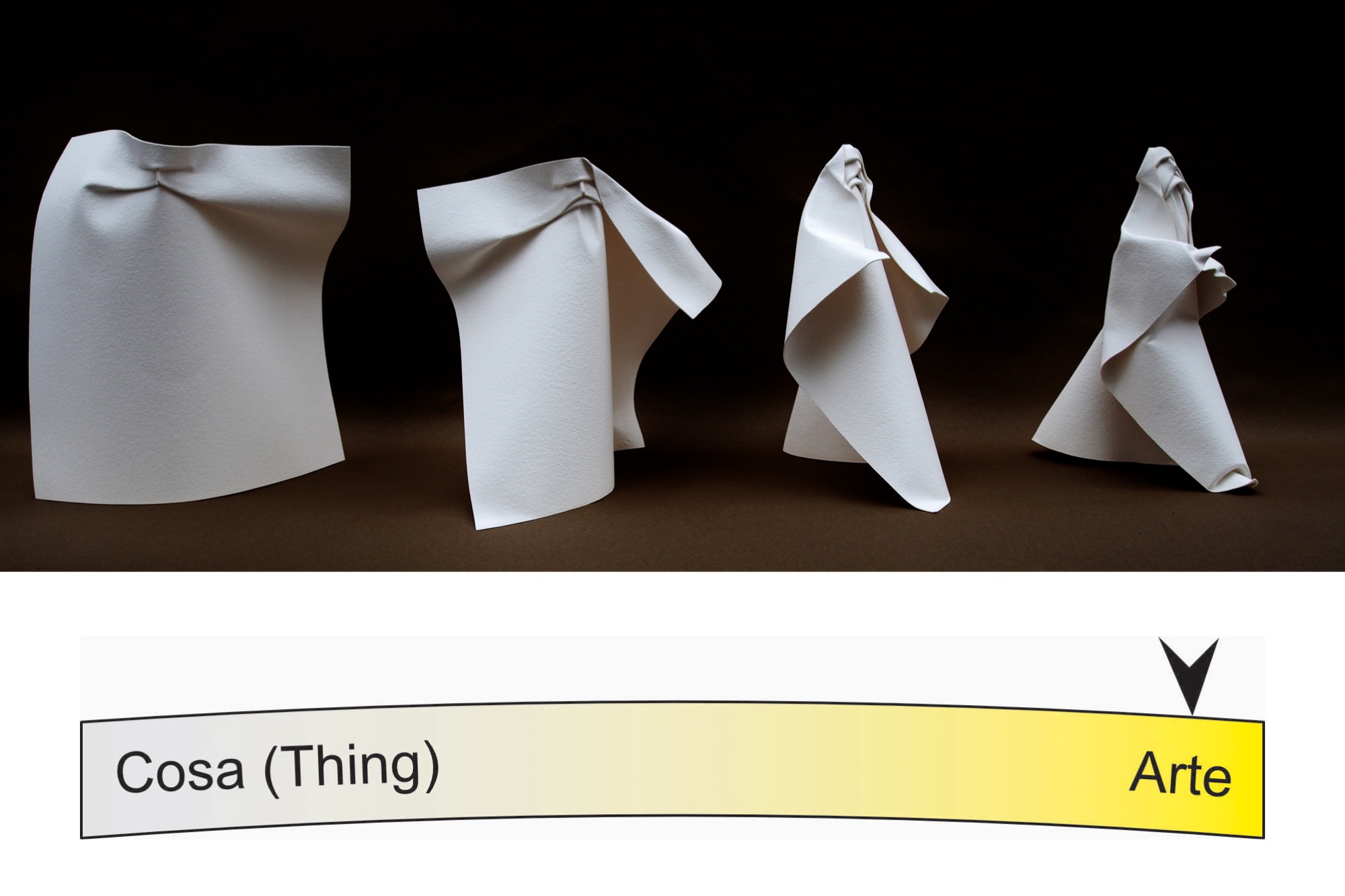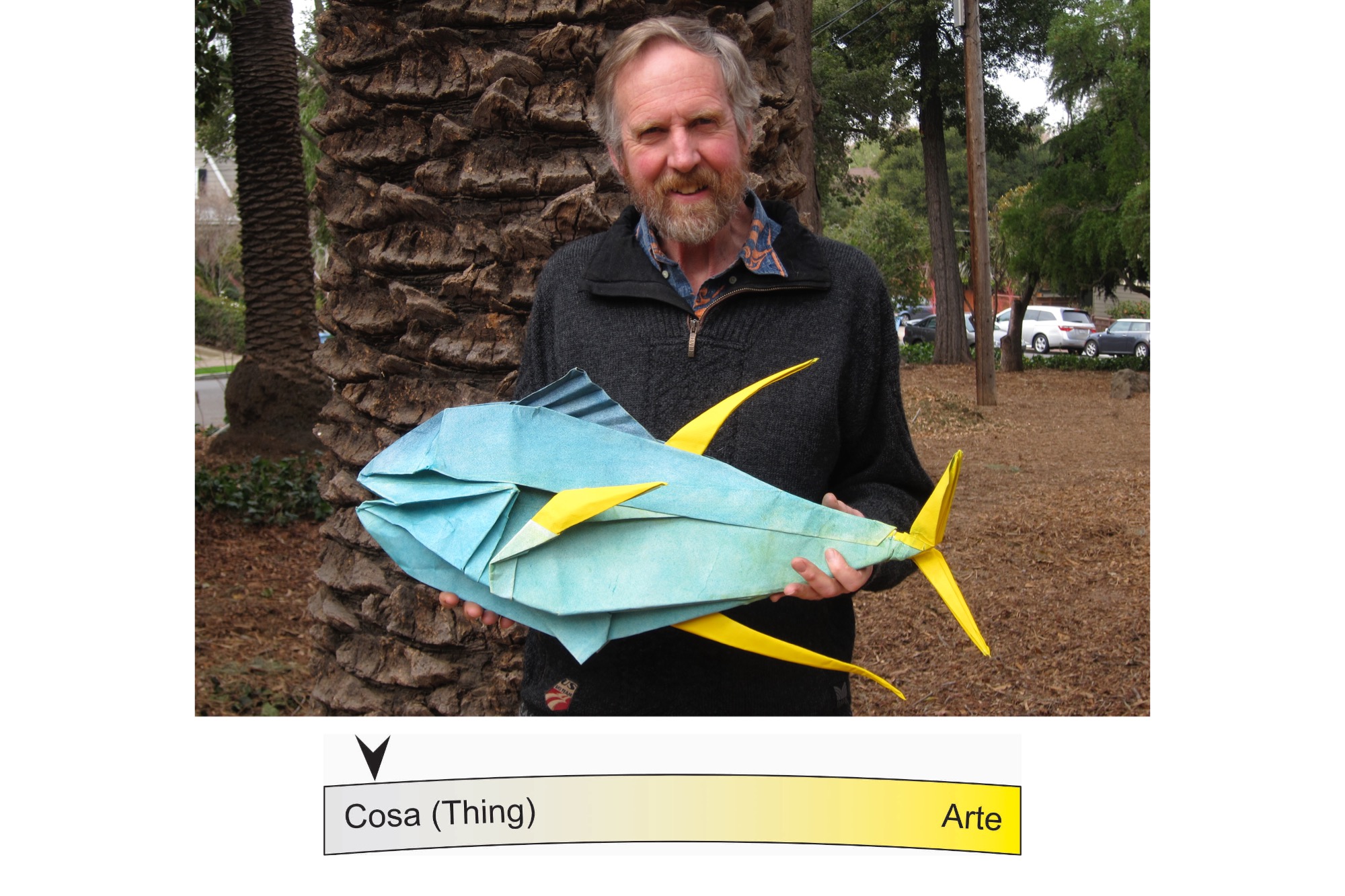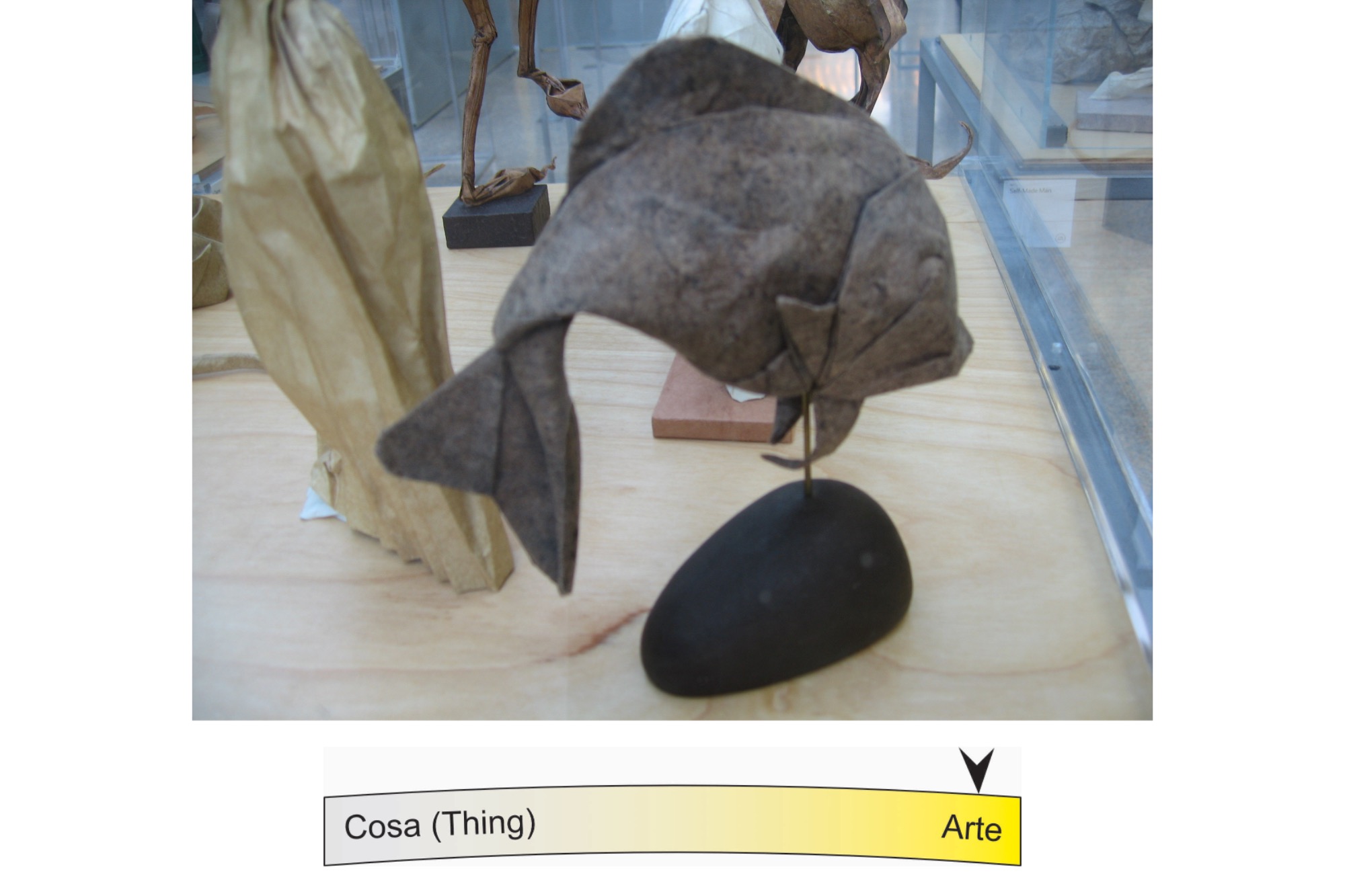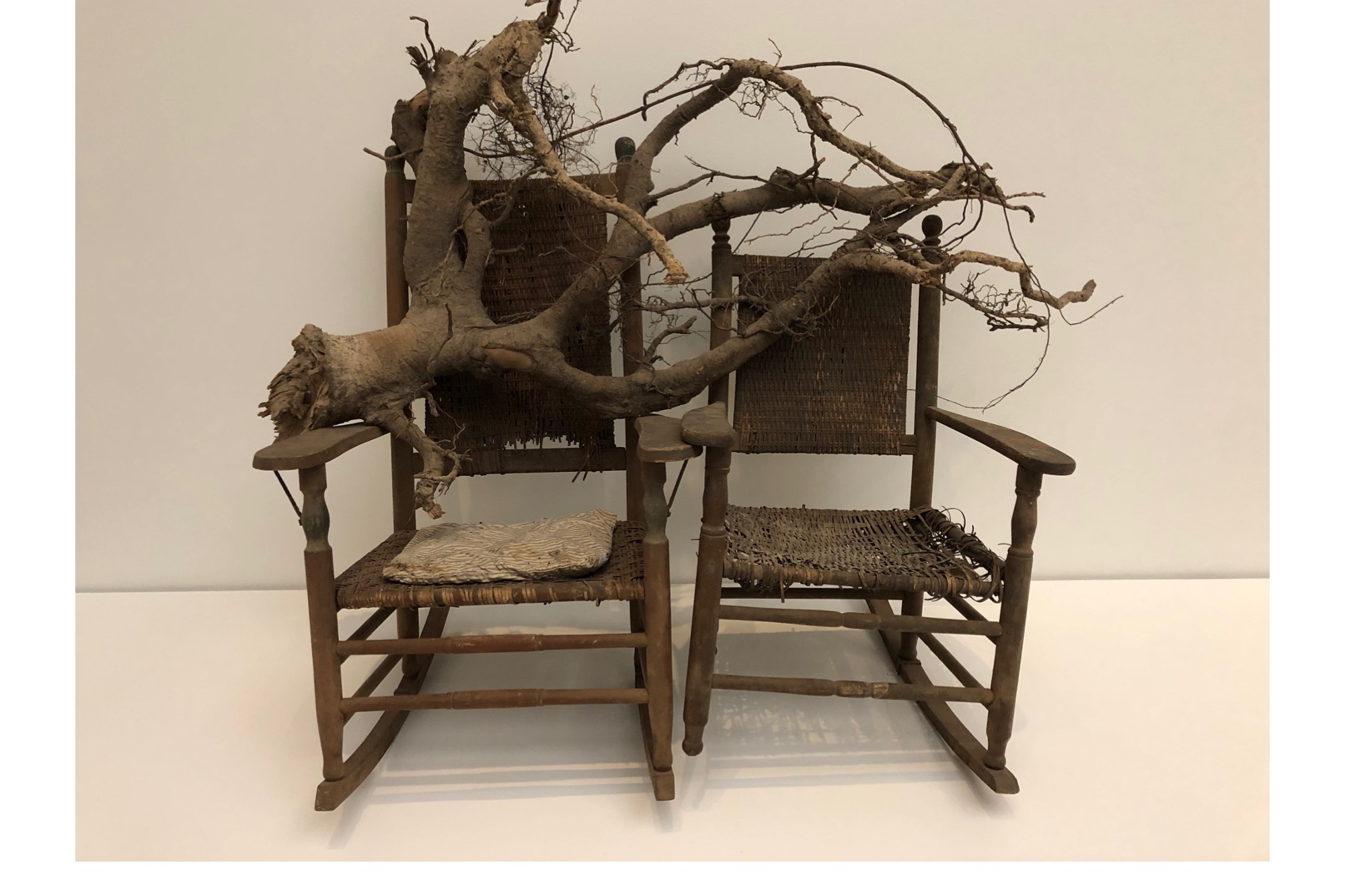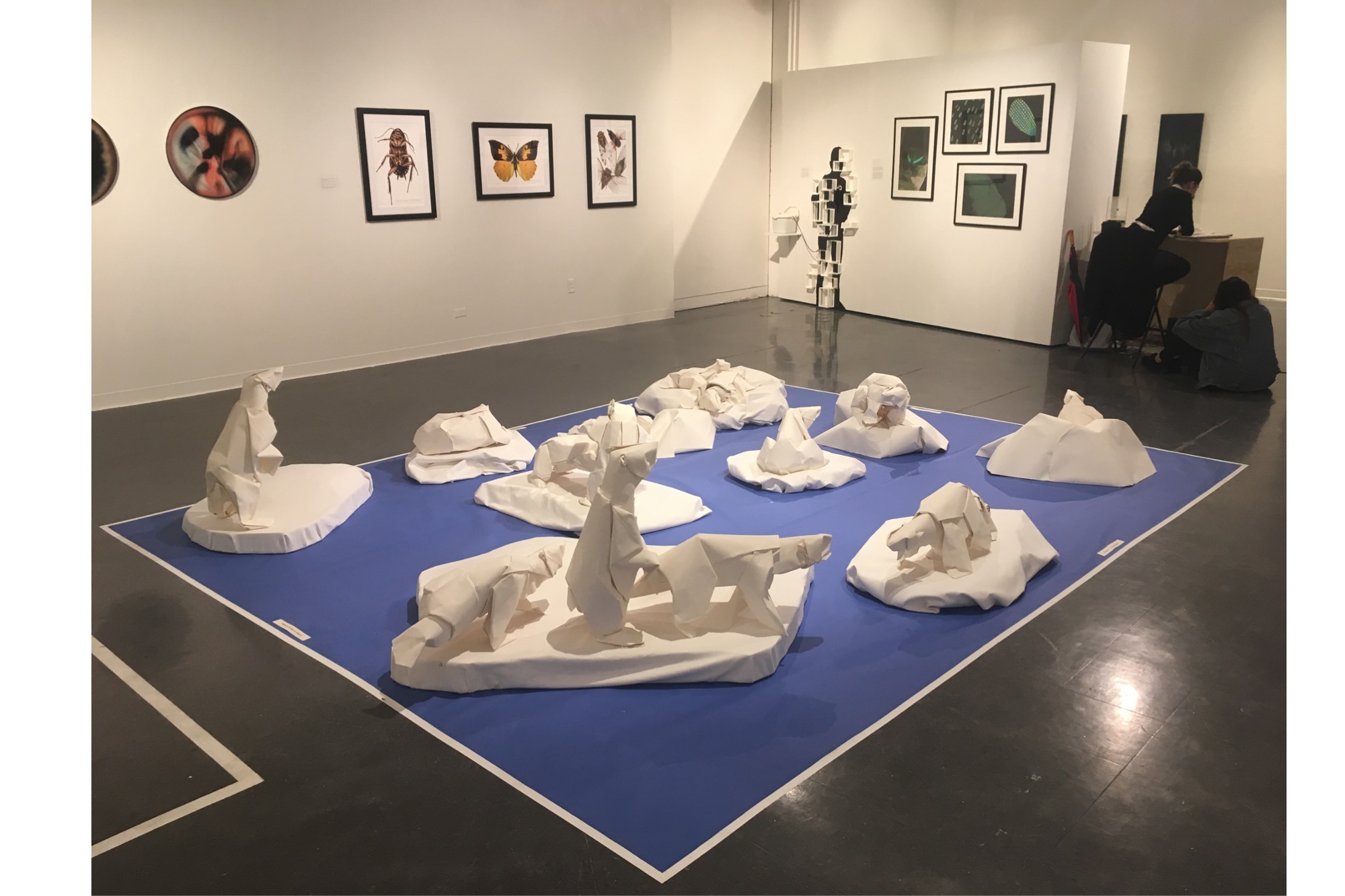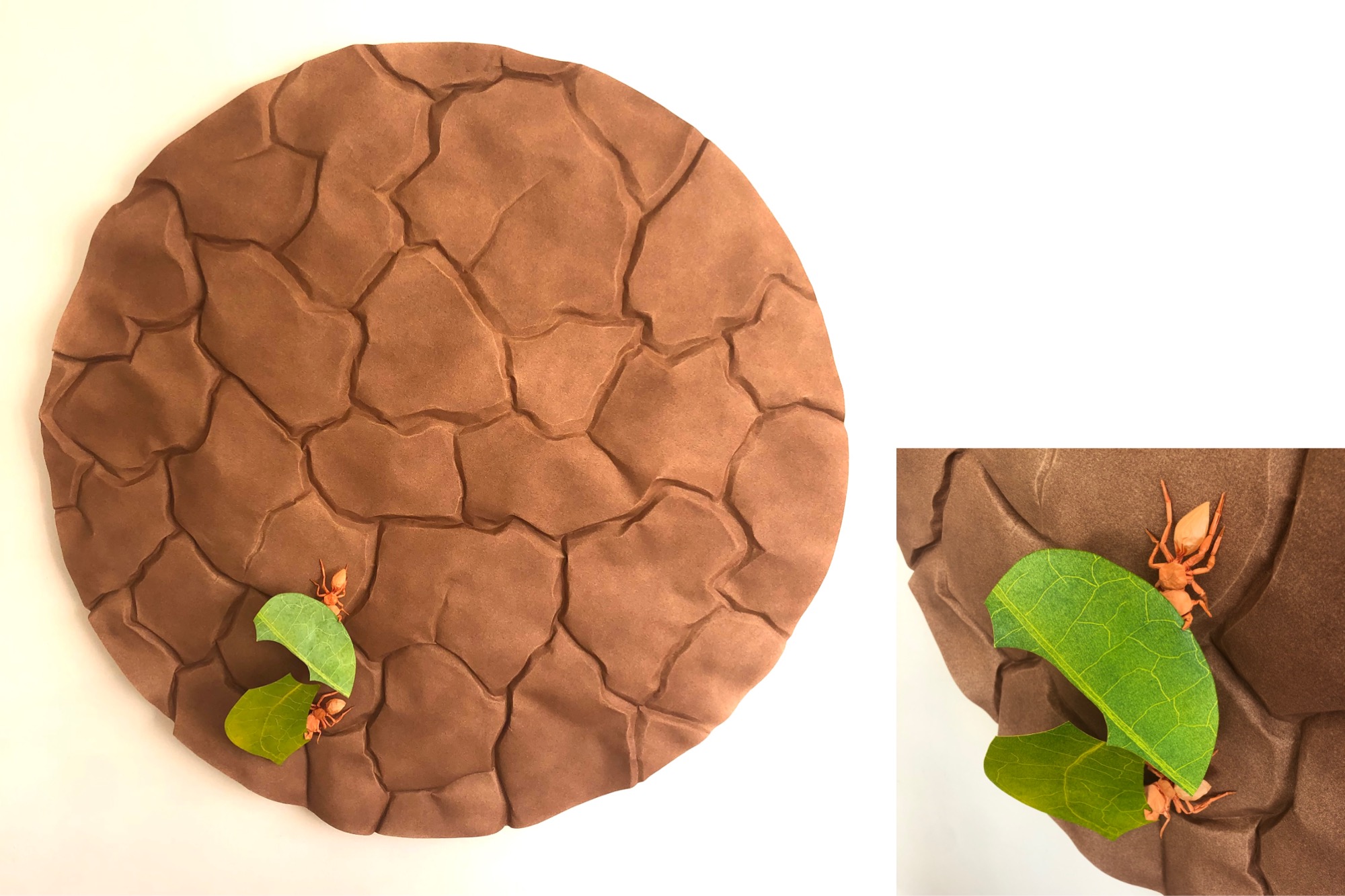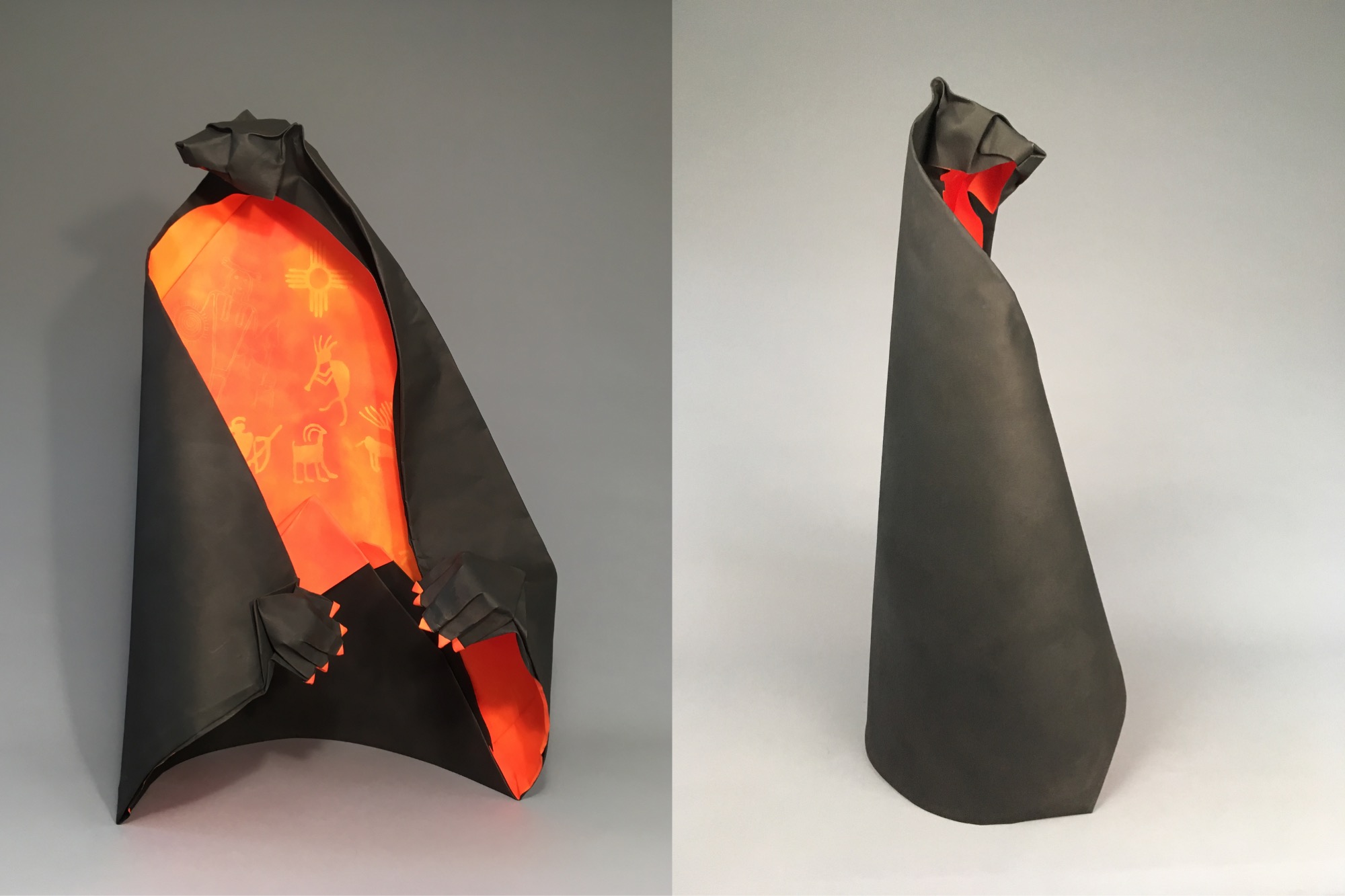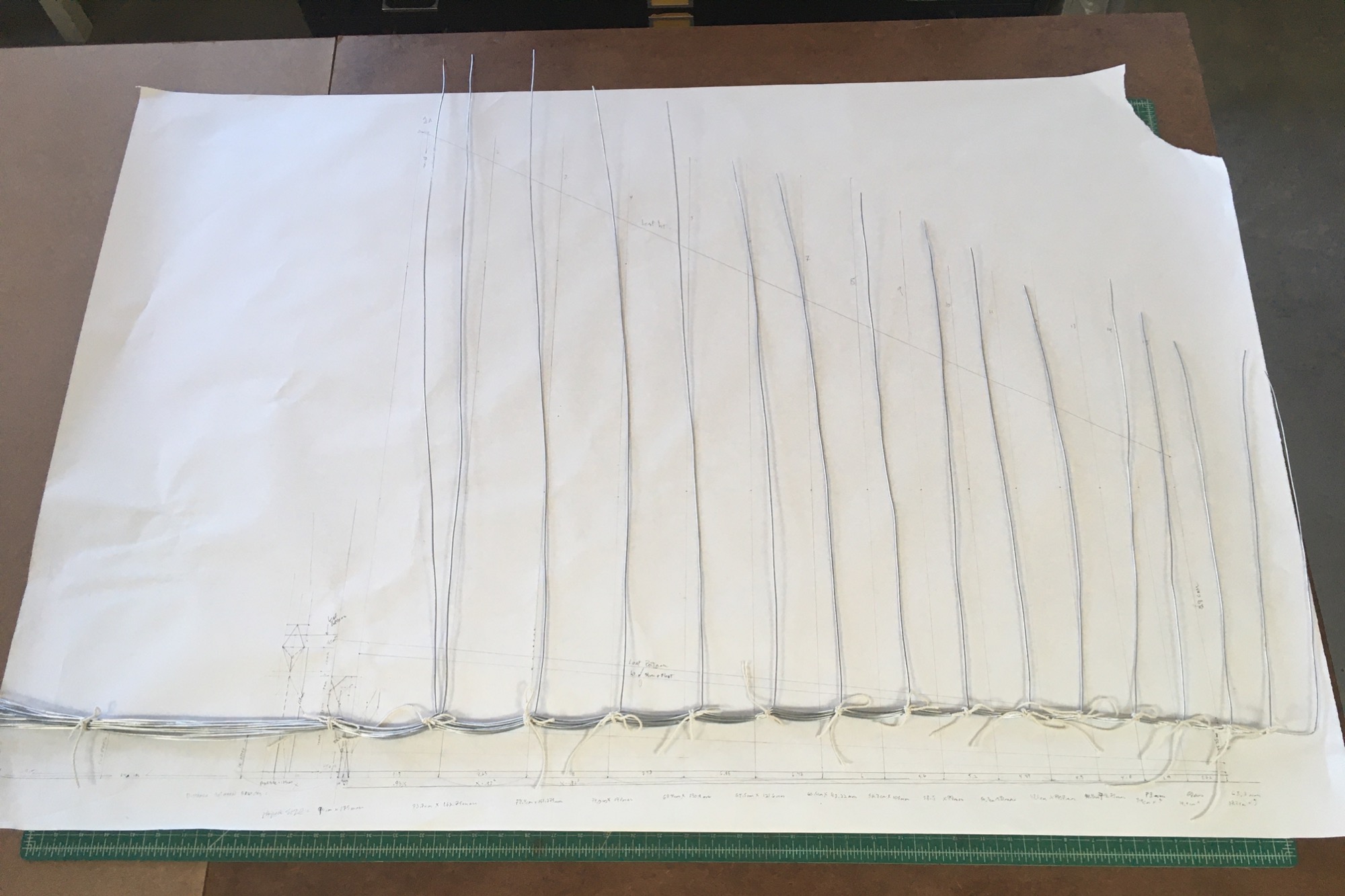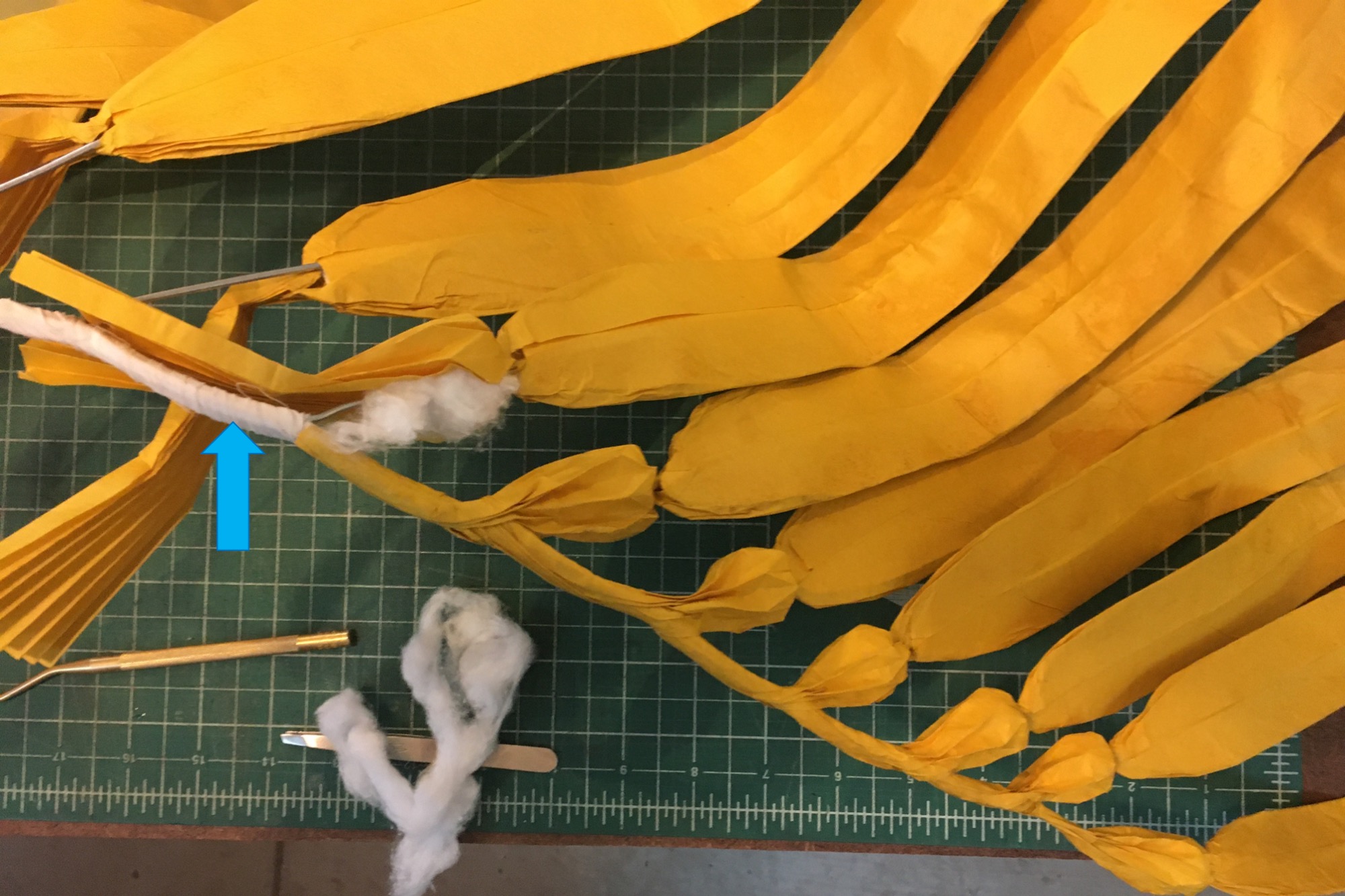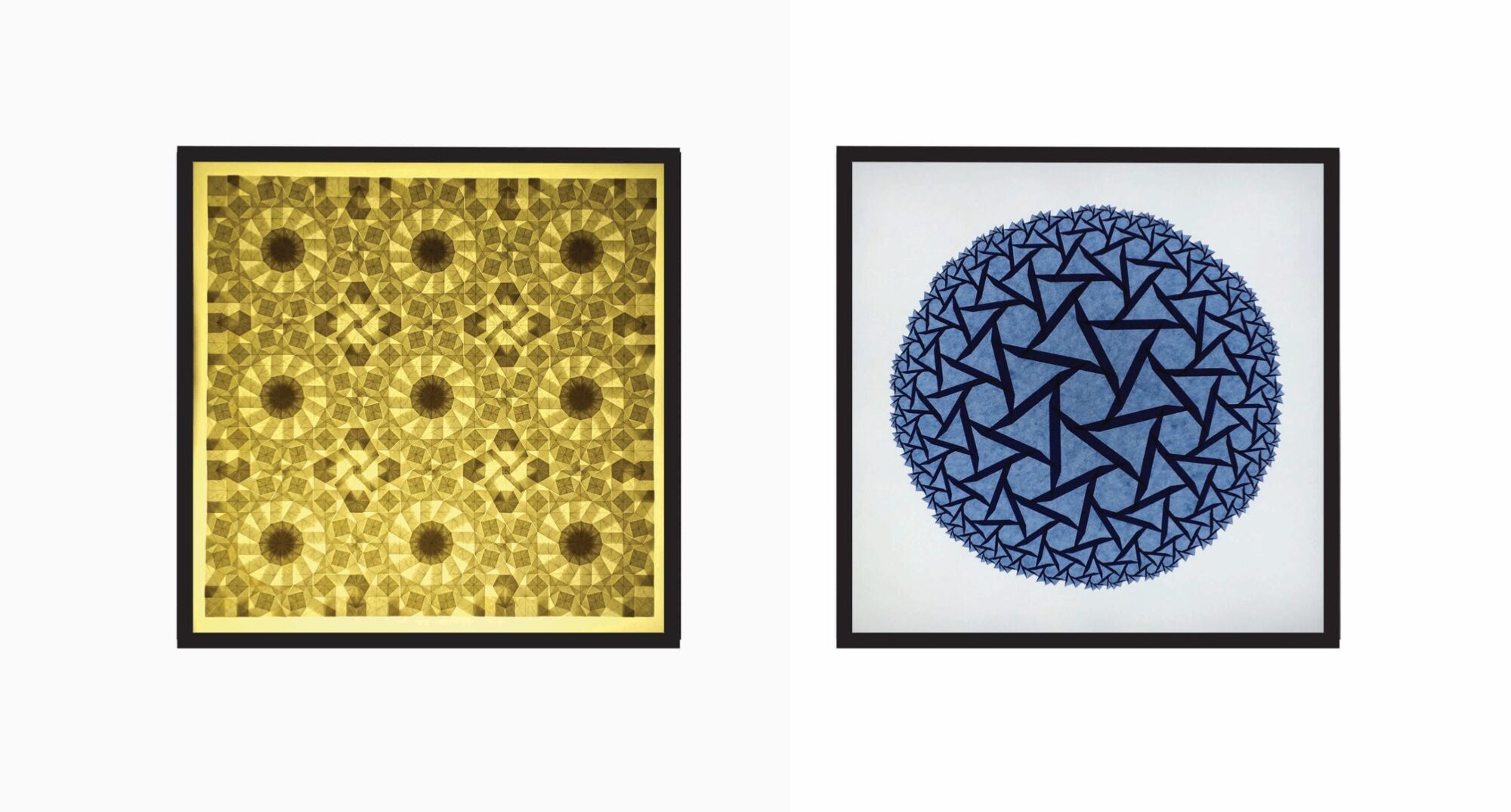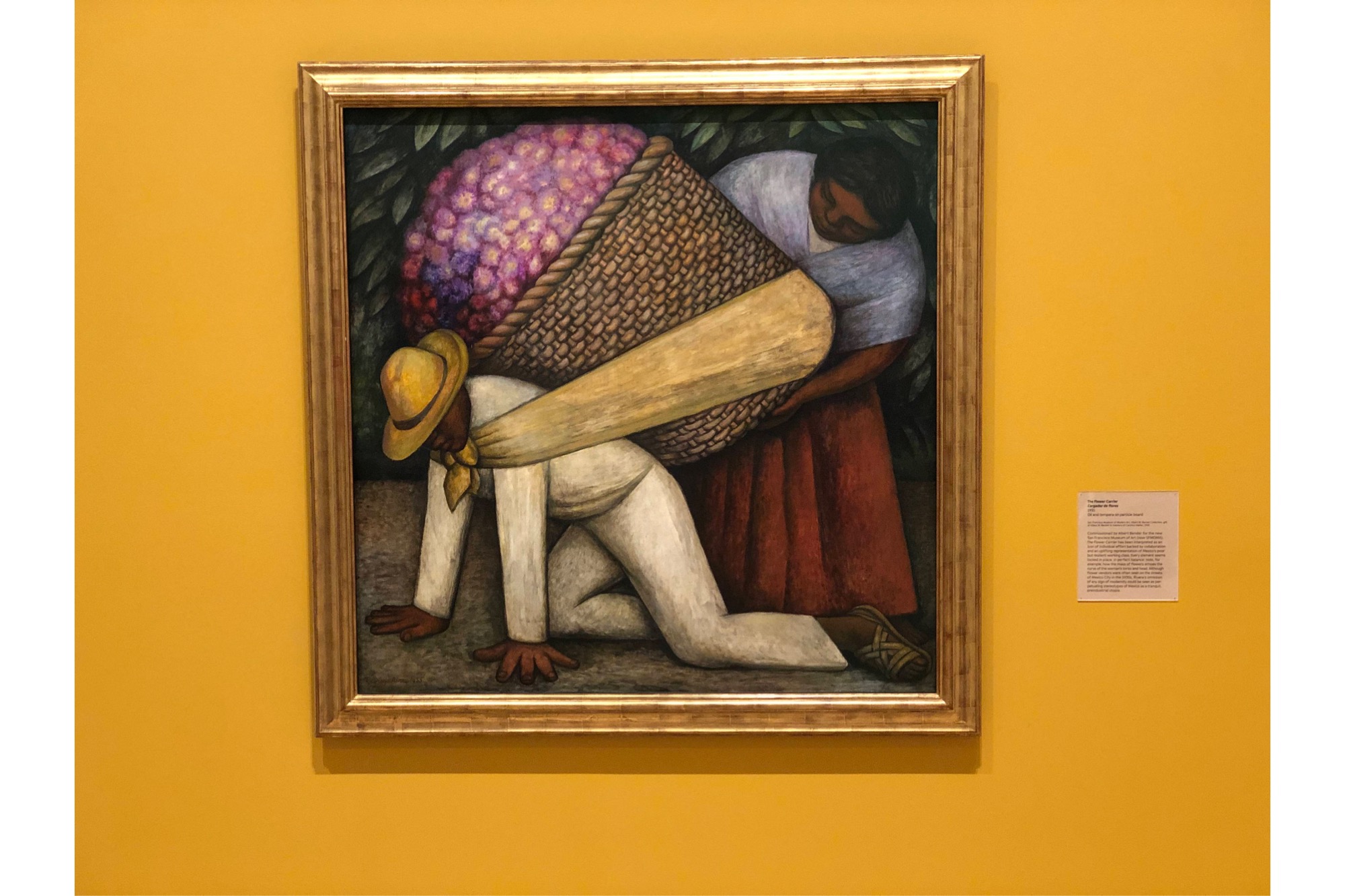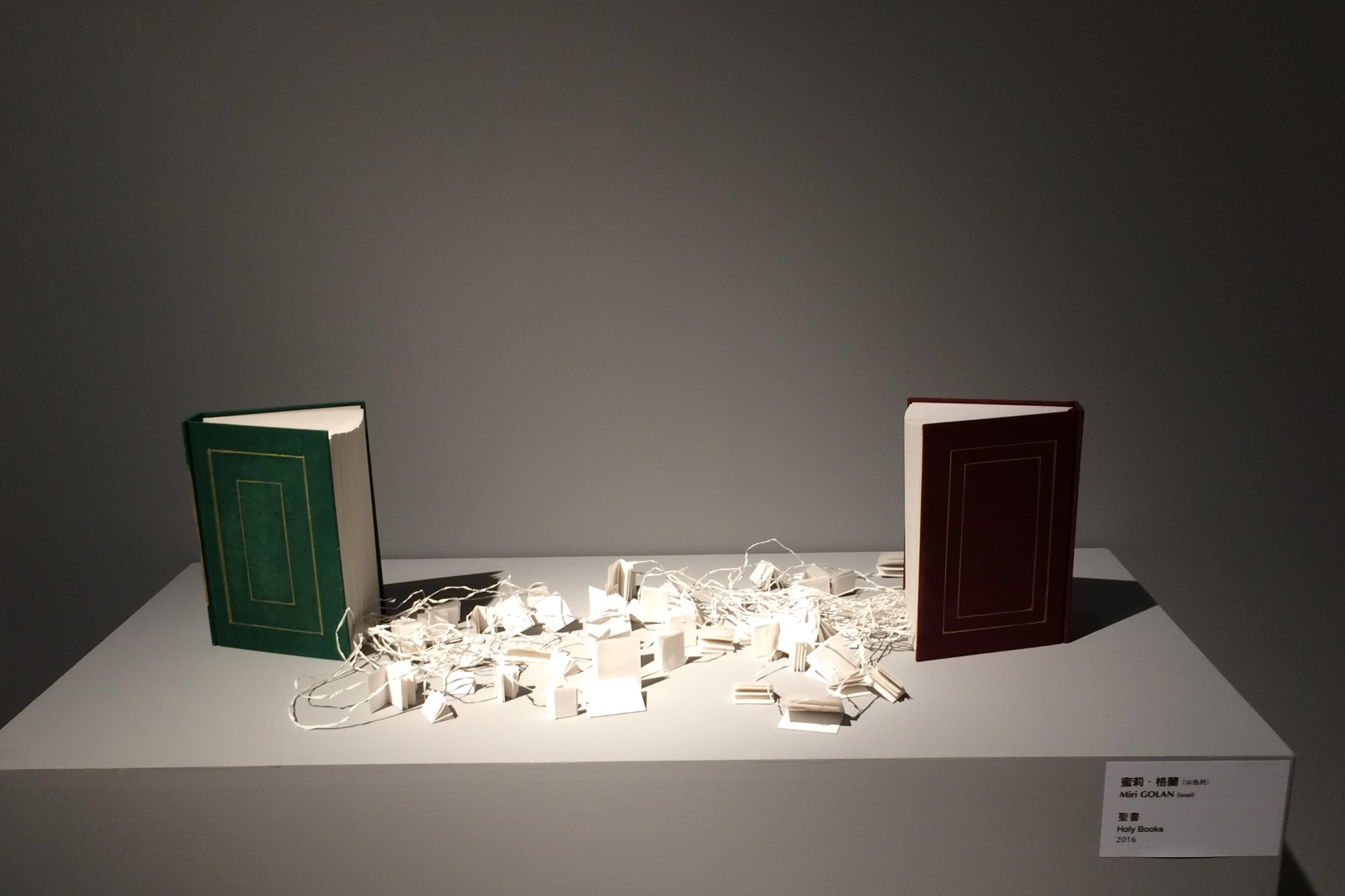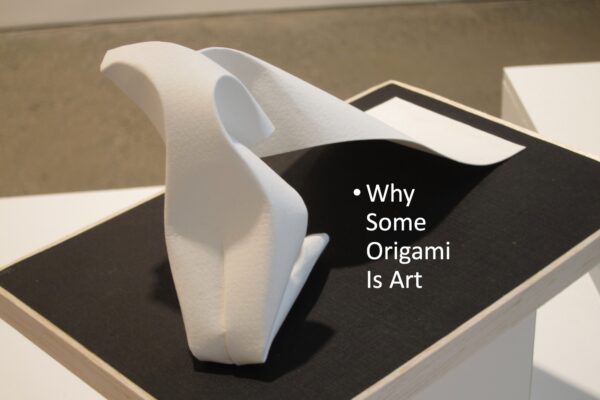
It doesn’t matter what art we hear or look at, whether it is dance, sculpture, or music, all good art has a narrative. It tells a story.
That story can be be literal or abstract like this piece. It can evoke a feeling or an emotion. It is much more than a representation of a technique.
Visual arts all share some basic elements that can be criticized. Let us think of a scale where art is on one side and things lacking expression are on the other side. Our origami is somewhere between these limits.
For the “Birth of a Tai Chi Master” a critic could ask if paper is the best medium to tell this story. Why choose this size? This color, these shadows? I think Giang Dinh’s work here is a perfect example of a thoughtful use of paper to tell a story. It stands up to any criteria of good art.
Would it matter to an art critic that my tuna (designed 2014) is made from one piece of paper with no cuts? No it doesn’t. As a potential art piece, the overall look is all that matters. This tuna lacks character, meaningful thought, and a message. It is a thing, not art.
Eric Joisel’s fish has expression. ]Curved elements are repeated. The details are not distracting. This fish has character.
Since the 1950’s visual art no longer needs to be beautiful or show expertise with technique to be considered art. A tree branch dropped on two old chairs can be art because it can tell a story. How can my things become art? I offer one way.
Combine things to tell a story. Here my things describe a food chain where small creatures are eaten by larger ones and finally by a surfer. It is out of balance, not sustainable (“Balance of Nature, designed 2018).
Size of art objects matters. Most origami is small and very fragile. Some pieces would have more impact if they were larger. How can we do this and ensure their survival?
 Here are some ways to go large. First do some drawings or make some small studies of your art (polar bears designed in year 2000).
Here are some ways to go large. First do some drawings or make some small studies of your art (polar bears designed in year 2000).
Then scale up by wet-folding thick paper cut from rolls. Wet-fold it in stages over a period of a week. Wet areas to work on, restrain their shape, and dry them before working on other features of your piece.
Put some of these big pieces in installations. This is called “Break-up” (designed 2018). It describes the effect of melting ice on polar bear behavior.
You can change the color of your paper by rubbing it with charcoal dust and then spraying it with varnish to maker the color permanent. See my blog on techniques for coloring paper.
The result (“Last Harvest”, designed 2023, 42 inches circular)
Like Joisel’s fish, notice the repetition of shapes and lines in the mud, the leaf edges and veins, and the ant’s legs.
Sculpture made from 300g weight paper can stand without armatures up to height of about a meter (“Bear Protector of the Mountain”, designed 2002, wet-folded in 2019)
Anything higher and or made from delicate paper needs an internal armature. Here is how I made one for a sea otter swimming in its habitat (“Kelp”, designed 2019).
Each leaf of the kelp plant has its own wire, extending from the leaf tip to the base of the plant. I tie them together. The longer leaves have thicker wire.
I wrap the wires with cloth strips (blue arrow). The paper of each leaf binds to the cloth when it is soaked in methyl cellulose.
A great way to make origami permanent is to mount it on the wall, or put it in a box frame. Tessellations work well this way because their elements can be parallel to the frame like Alesandro Beber’s image on the left. Round objects float within frames like Robert Lang’s tessellation on the right.
Frames are an important part of your image. Notice how the frame of this painting by Diego Rivera appears to press down on the figures inside it, making the load of the basket seem heavy.
You can also eliminate the effect of frames on the images inside them by bleeding the images beyond the frame borders such as in this view from inside a fish tank (“Aquarium”, designed 2016).
Finally, origami does not need to be complex to be good art. Miri Golan’s Holy Books (Koran and Bible) describe a hopeful relationship between two religions. Good art starts with an idea, an emotion, not just a representation of something or of a technique. It is an intentional and researched effort on the part of the artist.

